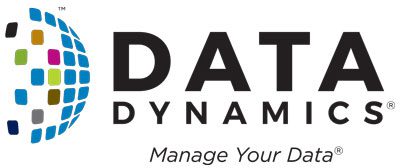Highlights:
- Global datasphere is projected to soar to 250 zettabytes by 2027, driven by AI’s rapid expansion, intensifying security, compliance, and ethical challenges.
- Currently constituting over 80-90% of enterprise data, dark and unstructured data acts as a black hole, presenting challenges that cannot be ignored for much longer.
- According to the Ponemon Institute, the average cost of a data breach has surged to $4.24 million. A significant portion of this cost is attributed to the compromise of sensitive information concealed within the shadows of dark data.
- To fortify their defenses, organizations must delve into the hidden corners of this uncharted terrain.
- The collaboration between Hitachi Vantara and Data Dynamics represents a pivotal step forward. Offering advanced storage solutions and unified data management, this partnership transforms dark and unstructured data from a liability into a strategic asset for enterprises.
In this Blog:
In the midst of the AI revolution, our world is experiencing an unprecedented surge in data. According to IDC, the global datasphere is projected to reach a staggering 175 zettabytes by 2025, primarily driven by the widespread adoption of AI applications and devices. While this influx of data has fueled insights and innovation, it has also brought forth a complex set of challenges, particularly in the areas of security, compliance, and ethical governance.
Today, organizations are grappling with a formidable challenge—a blind spot in information that not only exposes them to the looming threats of breaches and leaks but also hinders productivity, efficiency, and cost management. A significant contributing factor to this challenge is the overwhelming influx of dark and unstructured data, constituting 80-90% of the data generated by enterprises. It is imperative for organizations to uncover the hidden corners of this uncharted terrain to strengthen their defenses against potential security vulnerabilities and extract meaningful insights. This article delves into the multifaceted aspects of dark data, exploring its manifestations, challenges, and the transformative collaboration between Hitachi Vantara and Data Dynamics. Together, they promise to assist enterprises in transforming their data from a liability to an asset, paving the way for organizations to navigate the intricate landscapes of dark and unstructured data and turn these challenges into strategic opportunities through cutting-edge storage solutions and unified data management.
Unveiling the Dark Corners of Data
The exponential surge in data growth has left numerous organizations grappling in the dark. A recent survey paints a startling picture, indicating that a staggering 58% of organizations are in the dark about the sensitive data lurking within their systems. This lack of awareness regarding the nature, location, and sensitivity of their data creates a cloud of uncertainty, obscuring vital information.
The consequences of this informational blind spot are far-reaching. Firstly, it exposes organizations to the looming threats of potential breaches, leaks, or mishandling of sensitive data. Without a firm grip on their data assets, implementing robust security measures and governance protocols becomes a challenging task. This not only puts data integrity at risk but also complicates adherence to regulations, opening the door to potential legal consequences. Moreover, the absence of a comprehensive understanding of their data landscape makes navigating the ethical implications a formidable challenge. The ethical dimension of data is intricately tied to its context, usage, and consequences. Operating essentially in the dark, organizations struggle to unravel the ethical ramifications of their data usage, especially within the realm of AI algorithms.
Beyond security and ethics, this lack of insight seeps into the organizational fabric, eroding trust, hampering decision-making processes, and impeding the effective utilization of data as a strategic resource. In an era where information is of paramount value, the opacity surrounding one’s data landscape emerges as a substantial obstacle that organizations must contend with.
But why is this happening? Why are organizations finding it so hard to understand and act on their data? And the biggest question – Why is data transforming into a challenge instead of an opportunity?
Defining Dark Data: An In-Depth Exploration
In the heart of this predicament lies the overwhelming influx of unstructured data, often sidelined and referred to as ‘dark data.’ This uncharted terrain not only obscures potential insights but also serves as a hotspot for security vulnerabilities, fostering an environment ripe for cyber threats to flourish. According to Gartner, a staggering 60 to 85 percent of unstructured data within shared storage setups falls into this category. Dark data encompasses a wide range of information collected, processed, and stored by organizations but left unexplored for actionable insights. Its manifestations include redundant and trivial files, obsolete records, and unstructured content. Beyond its surface-level definition, delving into the intricacies of dark data is essential for organizations to fortify their defenses against its menacing grip.
Redundant Data: A Burden on Storage Infrastructure
Redundant data, stemming from backup practices and versioning, extends beyond being a mere strain on storage—it poses a multifaceted challenge with intricate technical aspects. Managing numerous copies involves intricate synchronization processes and requires balancing data recovery with storage efficiency through sophisticated solutions. A recent study highlights the urgency of addressing this issue, revealing that almost 41% of globally stored information is redundant. This redundancy not only escalates storage costs but also significantly amplifies the risk of potential security breaches, as each copy introduces a potential vulnerability, necessitating advanced encryption and access control measures.
Trivial Data: The Stealthy Threat in Automation
Trivial data generated by automated processes introduces vulnerabilities due to its seemingly innocuous nature, with technical challenges arising from automated data generation processes and monitoring intricacies. According to Cisco’s “State of Cybersecurity” report, the lack of monitoring for trivial data is acknowledged by 32% of security professionals, emphasizing the need for advanced anomaly detection algorithms and automated monitoring tools. A focused technical approach to identifying, categorizing, and protecting against trivial data is crucial for comprehensive cybersecurity, requiring advanced machine learning models for real-time threat detection and response.
Obsolete Data: Breeding Ground for Compliance Violations
Often relegated to digital obscurity, obsolete data becomes a breeding ground for legal and regulatory violations, necessitating efficient technical solutions. Identifying obsolete data involves deploying advanced data analytics and machine learning algorithms, establishing clear retention policies requires robust data lifecycle management systems, and mitigating potential legal consequences demands advanced legal tech tools. A survey by the Compliance, Governance, and Oversight Council (CGOC) highlights a concerning statistic—70% of data stored by organizations lacks business, legal, or regulatory value. Proactive technical measures, including automated data deletion policies and regular audits using advanced data forensics tools, are vital to prevent compliance pitfalls and enhance operational efficiency.
Unstructured Data: Wrestling with the Wild West
Unstructured dark data, spanning emails, documents, and multimedia files, introduces technical challenges that require careful navigation. The sheer diversity of unstructured data formats necessitates innovative solutions in the form of advanced data normalization and indexing techniques. Gartner’s insight that unstructured data accounts for 80% of the world’s total data volume underscores its prevalence, demanding advanced big data analytics tools for meaningful insights. The absence of governance over unstructured data poses security vulnerabilities, impedes data accessibility, and heightens the risk of regulatory non-compliance. Robust data governance frameworks, incorporating advanced metadata management and access control mechanisms, along with advanced search and retrieval mechanisms leveraging natural language processing, are pivotal for organizations to assert control over this data frontier.
Dark data is not just a theoretical concern; its risks are backed by alarming statistics. The Ponemon Institute’s 2023 “Cost of Cyber-Crime” study reveals that the average cost of a data breach has risen to $4.24 million. A substantial portion of this cost can be attributed to the compromise of sensitive information hidden within the shadows of dark data. So why does it still exist?
The reasons are multifaceted. Firstly, managing and deciphering insights from dark data presents a formidable challenge for enterprises compared to structured data due to its inherent unstructured and often inaccessible nature. Unlike structured data, which is well-organized and easily analyzable, dark data comprises vast amounts of unprocessed information that is typically unused and resides in various formats, such as text, images, videos, and more. Its sheer volume and diversity make it difficult for traditional data management systems to effectively handle and interpret. Moreover, the lack of standardized formats and metadata exacerbates the complexity, making it challenging to establish a uniform framework for analysis. Security and privacy concerns also play a significant role, as dark data may contain sensitive information, requiring careful handling and compliance with data protection regulations.
However, beneath this veil of complexity and chaos, dark data holds immense potential value for organizations. It possesses latent insights capable of enhancing business processes and steering better decision-making – be it security, compliance, efficiency, or customer experience. To efficiently manage dark data and extract meaningful insights, businesses need to adopt stringent data management protocols encompassing meticulous visualization, discovery, categorization, optimization, security, and compliance. This demands advanced analytics tools and techniques, often involving artificial intelligence and machine learning. It’s best to have a means of doing so through a single centralized software to avoid fragmented views and data silos that can easily cloud decision-making. And that’s exactly what the collaboration between Hitachi Vantara and Data Dynamics promises.
Turning Challenges into Opportunities with Data Dynamics and Hitachi Vantara
Enter the partnership of Data Dynamics and Hitachi, a strategic alliance empowering enterprises to successfully navigate the intricate landscapes of dark and unstructured data with a blend of state-of-the-art storage solutions and unified data management. Together, Data Dynamics and Hitachi are transforming alarming statistical indicators into strategic insights, unlocking the untapped potential within the shadows, and ensuring a future that is not only secure and compliant but also innovative.
The synergy between Hitachi Vantara’s robust storage solutions and Data Dynamics’ AI/ML-driven platform has given rise to a comprehensive suite. This suite is designed to combat data sprawl, mitigate risks, and enable organizations to effectively manage, protect, and gain insights from their unstructured data. All of this is achieved while maintaining compliance and reducing costs. The power of AI and machine learning is harnessed to discover unstructured data, providing valuable insights for utilization, optimization, sensitive data categorization, and remediation.
Central to this collaboration is Data Dynamics’ cutting-edge unified data management platform, fueled by state-of-the-art AI/ML technologies. This platform not only unlocks intricate insights into unstructured data but also enhances data security, ensures compliance, and optimizes storage. A standout feature is the metadata and content analytics capability, driven by a robust data science engine, significantly improving the discovery and classification of sensitive data. What sets this collaboration apart is its consultative and strategic approach, crafting bespoke data management solutions tailored to the unique needs of each company. The process involves meticulous analysis of stored data, generating metadata insights for risk assessment, compliance assurance, and security, and ultimately transitioning data into a well-managed, secure, and efficient state.
This partnership seamlessly integrates with Hitachi Vantara’s existing suite of storage solutions, championing a collaborative approach to meet customer needs. The focus is on creating a balanced data environment that not only curtails costs and mitigates risks but also enhances data utilization, all while ensuring compatibility with existing IT infrastructure. Beyond optimizing storage infrastructure, the collaboration directly addresses executives’ concerns regarding corporate data risk exposure. By offering insights into data discovery, cataloging, and classification, the partnership tackles critical issues of data compliance, security, and protection. Through the prowess of AI and ML analytics, this collaboration emerges as a catalyst for enterprises grappling with data overload, empowering them to metamorphose data challenges into strategic advantages in an era dominated by data-driven decisions.
For further information, click here or reach out to us via email at solutions@datdyn.com or call us at (713)-491-4298. Additionally, you can schedule a meeting with one of our executives to explore the details of the partnership and discover how it can benefit your enterprise. Set up a meeting by clicking here.






